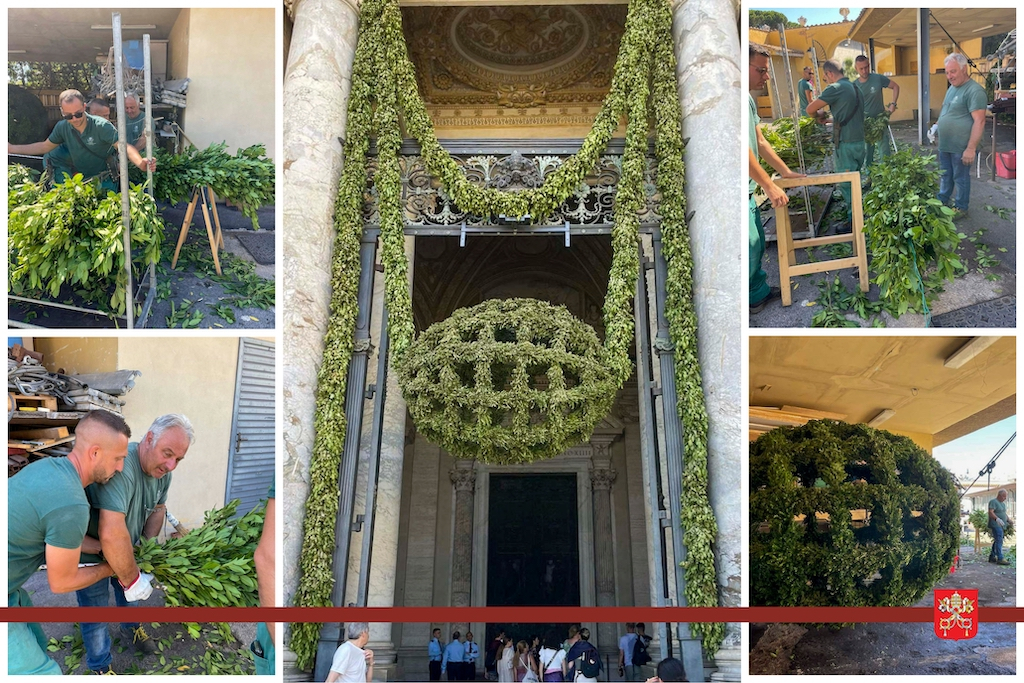The “Nassa del Pescatore” (Fisherman’s trap) in memory of Saint Peter

A service provided by the Garden and Environment Service of the Governorate
In honour of the first Pope, the Garden and Environment Service of the Governorate of Vatican City State’s Directorate for Infrastructures and Services, has renewed a tradition that dates back to the end of the 18th century, and has not been resumed since 2017.
Traditionally, the so-called “Nassa del Pescatore” (fisherman’s trap) was hung on the two white columns made of African marble of the central gate of the Vatican Basilica, until the evening before the Solemnity of Saints Peter and Paul, to recall the Prince of the Apostles’ profession.
The structure is made from a metal alloy shaped like a fisherman’s trap, an ancient tool used in fishing, made of a funnel and a net in which the fish are trapped, after being attracted by bait. It evokes the traps that fishermen in the Sea of Galilee used to put at sea in the evenings, and picked up at dawn to retrieve the fish and replace the bait.
The trap is hung by two ropes, entirely covered by aromatic plant leaves. Five hundred bunches of myrtle (myrtus tarentina) and 400 small bunches of bay leaves (laurus nobilis) are tied along the ropes. Rafael Tornini, who is in charge of the Garden and Environment Service, highlights the effort involved in in carrying out this work, an effort which involves 10 people. The first stage takes place one week before 29 June, when myrtle, which grows abundantly in the Vatican Gardens, is collected. The leaves are transferred to the Service’s buildings in the heart of the Vatican Gardens, where they undergo a selection process and a wash. Leaves that are too young are cut with scissors and set aside for other purposes, due to the fact that they would rot in a short amount of time. The leaves are then collected into small bunches, immersed in a tub of water and stored in a cold room. Bay leaves have to be purchased as there are not enough of them in the Vatican Gardens They are then treated in the same way as the myrtle.
Two days ahead of the Solemnity, the fisherman’s trap is placed under a large canopy and fixed on its side with two steel rings. Using metal wire, the gardeners then attach the bunches of myrtle at eye level, as other staff members keep the structure still. The inside and outside of the structure are covered with the aromatic leaves, that release their characteristic smell.
Meanwhile the two ropes are stretched out and anchored to additional steel rings, and two gardeners cover them with small bunches of bay leaves, in a meticulous operation. Once everything has been arranged, the fisherman’s trap is transported by truck to the parvis of the Vatican Basilica and raised onto the marble columns, which symbolically represent the Apostles Peter and Paul, the foundations of the Church.
In honour and in celebration of Saint Peter, the Garden and Environment Service also handles the floral arrangements that are placed before the Altar of the Confession in the Basilica and at the statue of the first Pope.





